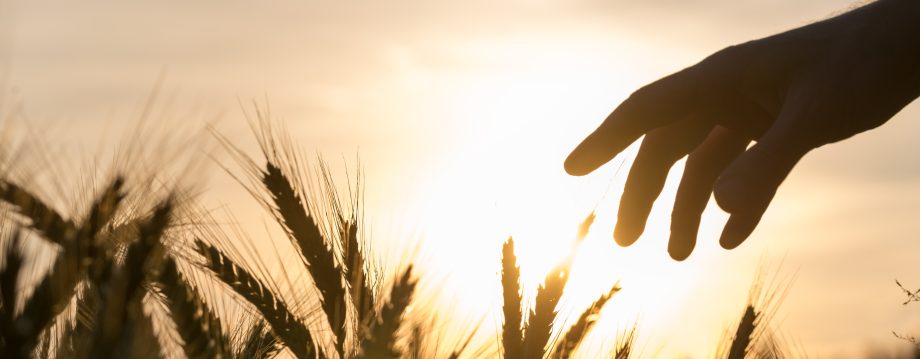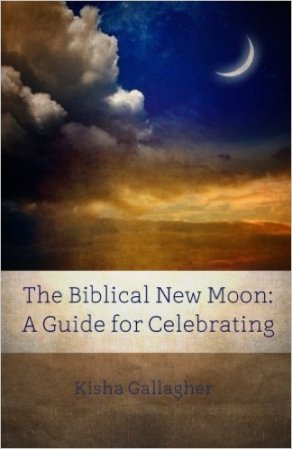The mystery of light still baffles modern scientists and theologians alike. We explored some of the reasons why in The Light of World Part I. In this post, I hope to take the scientific and spiritual dynamics a step further.
The Electromagnetic Spectrum
The electromagnetic spectrum is the term used by scientists to describe the entire range of natural light. This spectrum is broken into seven specific regions. Subdividing into smaller spectra is done mostly on the basis of how each region of electromagnetic waves interacts with matter. The diagram below depicts the electromagnetic spectrum’s seven regions.
As the graphic above shows, visible light only comprises about 1.5% of the entire light spectrum. Thus, we could say that we are “blind” to the vast majority of light. And the only reason we can see visible light is because God built special receivers right into our heads: our eyes.
If the natural world teaches us about the spiritual world, then we can deduce that (left to ourselves) we are “blinded” to at least 98.5% of spiritual light as well. Since light in the Bible is often synonymous with the Torah (Law), Word, and Yeshua (Jesus), is it any wonder that God compares us to a blind person when we reject His Law, Word, and/or Yeshua? Consider the following Scripture verses:
The Torah (law), the Word and Yeshua are LIGHT
Thy word is a lamp unto my feet and a light unto my path. (Ps.119:105)
The entrance of thy words give light; it gives understanding to the simple. (Ps.119:130)
For the commandment is a lamp; and the law (Torah) is light; and reproofs of instruction are the way of life: (Pr. 6:23)
To the law (Torah) and to the testimony: if they speak not according to this word, it is because there is no light in them. (Is. 8:20)
“This is the judgment, that the Light has come into the world, and men loved the darkness rather than the Light, for their deeds were evil. (20) “For everyone who does evil hates the Light, and does not come to the Light for fear that his deeds will be exposed. (21) “But he who practices the truth comes to the Light, so that his deeds may be manifested as having been wrought in God.” (Jn. 3:19-21)
“I have come as Light into the world, so that everyone who believes in Me will not remain in darkness. (Jn. 12:46)
What the above verses teach us is that God’s light is the only true light. Only His light can illuminate our darkness. Therefore, it is vital that we receive His light. Sadly, many of those that claim to follow Yeshua (Jesus) reject His Torah or law, and replace it with traditions of their own making. According to Isaiah (8:20), there is no light in this type of worldview.
Perhaps Israel (God’s people — including both Jews and Gentiles), truly are “blind in part” as Paul stated in Romans 11. Something is missing. But this is a lengthy discussion best treated with its own set of posts. For now, consider that God uses the Torah (law), the Word and Yeshua as equivalent expressions throughout Scripture. Each of these concepts is what YHWH judges to be His LIGHT. And they are NOT mutually exclusive of one another no matter what modern theology claims.
It is no coincidence that the electromagnetic spectrum has SEVEN ranges or types of natural light. Spiritually speaking, this is a perfect picture of the SEVEN branched menorah — the epitome of God’s Spiritual light that radiates through and by our Messiah, Yeshua.
Visible Light
If all the different wavelengths of visible light fall on the eye at the same time, white light is seen. However, if that light is refracted, there are SEVEN (that number keeps popping up!) possible colors visible to the human eye as shown in the figure below.
ROY-G-BIV is the acronym that represents all of the colors in the visible spectrum of light. R (red) – O (orange) – Y (yellow) – G (green) – B (blue) – I (indigo) – V (violet). Not only are those the colors we can see as humans, but they are also in the right order. Red has the longest wavelength and violet has the shortest. In other words, red is the least energetic and violet is the most energetic of the visible spectrum[1]. We will look more closely at these colors when we explore the “rainbow” in a later post.
The prophet Ezekiel was blessed with a colorful vision of heaven. In the verses below, notice the many colored stones, the mention of fire (a form of light), and the reference to the rainbow. All these images are given to us by the prophet to describe the throne room and glory of YHWH.
Ezek. 1:26-28 And above the firmament that was over their heads was the likeness of a throne, as the appearance of a sapphire stone: and upon the likeness of the throne was the likeness as the appearance of a man above upon it. (27) And I saw as the color of amber, as the appearance of fire round about within it, from the appearance of his loins even upward, and from the appearance of his loins even downward, I saw as it were the appearance of fire, and it had brightness round about. (28) As the appearance of the rainbow that is in the cloud in the day of rain, so was the appearance of the brightness round about. This was the appearance of the likeness of the glory of YHWH. And when I saw it, I fell upon my face, and I heard a voice of one that spake.
In a like manner, the Beloved disciple John was also given a vision of the throne room. Notice the similarities and the reference to colors and light.
Rev 4:2-3 And immediately I was in the spirit: and, behold, a throne was set in heaven, and one sat on the throne. (3) And he that sat was to look upon like a jasper and a sardine stone: and there was a rainbow round about the throne, in sight like unto an emerald.
Ezekiel and John could see a rainbow (refracted light) surrounding the throne of YHWH, which means the one at its center, must be nothing less than pure white light! Also notice Ezekiel’s description of seeing amber. Amber has a GOLDEN look and sheen. Can you think of a symbol in scripture that is amber or golden in color and also displays light?
The Menorah
There is no better symbol in all of scripture to encompass the theme of “YHWH/Yeshua as Light” than the Menorah. The menorah was first described to us through Moses when YHWH gave him instructions for the furnishings of the holy place in the tabernacle. Menorah is the Hebrew word for a candlestick or lamp stand. This word literally denotes the means by which light comes or that which bears light. The menorah had a very specific design. Speaking of this holy piece of furniture, YHWH said:
Ex. 25:31-39 And thou shalt make a candlestick of pure gold: of beaten work shall the candlestick be made… (32) And six branches shall come out of the sides of it; three branches of the candlestick out of the one side, and three branches of the candlestick out of the other side: (33) Three bowls made like unto almonds, with a knop and a flower in one branch; and three bowls made like almonds in the other branch, with a knop and a flower: so in the six branches that come out of the candlestick… (37) And thou shalt make the seven lamps thereof: and they shall light the lamps thereof, that they may give light over against it…(39) Of a talent of pure gold shall he make it, with all these vessels.
While other implements of the sanctuary were to be overlaid with gold, ONLY the menorah was to be made of ONE solid piece of PURE gold. In three passages of scripture, the menorah is called “the pure menorah”[2]. All the tabernacle furnishings were to be made precisely as YHWH showed Moses on the mountain[3], but He repeats the instruction only in reference to the menorah emphasizing its significance.
Ex. 25:40 “So see, and do according to the pattern which was shown to you on the mountain”
Let’s look at some facts about the menorah[4]:
- It is fashioned out of ONE piece of hammered gold.
- It’s designed to resemble and almond tree. (Notice its decorations)
- It has ONE central shaft with 3 out workings on each side. (7 Branches)
- Common Israelites, not the priests, provided the pure olive oil that kept the menorah continually burning. (Ex. 27:20-21)
One Piece of Hammered Gold
The menorah was the only piece of holy furniture that was made solely of pure gold. Even the Ark of the Covenant in the Most Holy Place was made of acacia wood overlaid in gold. The fact that it took one piece of gold measuring a talent to make the menorah speaks to the oneness of this set apart object. Since the Holy Place was completely covered, the menorah would be the only light source for the priests to perform their duties. When you look at or think of the golden menorah, your first thought should be the on its first description: One. Which is UNITY.
Dt. 6:4 “Hear, O Israel! The LORD is our God, the LORD is one!
Almond Tree
God’s instructions for the menorah included decorations from the almond tree. In Hebrew, the almond is called esh’kedia, which literally translated means “to be alert, watchful, and to be awake”. Interestingly, the almond tree is the first tree to bloom or “wake-up” in Israel in the early spring. Moreover, an almond is shaped like the human eye, thus in Hebrew it is named after the function of the eye. Jeremiah has a passage that illustrates these concepts beautifully.
Jer. 1:11-12 Moreover the word of YHWH came unto me, saying, Jeremiah, what seest thou? And I said, I see the branch of an almond tree [esh kedia]. (12) Then said YHWH unto me, “Thou hast well seen: for I am watching [sho’ked] over my word to perform it.”
In this passage, YHWH uses something very tangible (the almond tree) to picture something abstract (His watchful eyes). Zechariah confirms this image.
Zec. 4:2-6 And he said to me, “What do you see?” I said, “I see, and behold, a menorah all of gold, with a bowl on the top of it, and seven lamps on it, with seven lips on each of the lamps that are on the top of it. (3) And there are two olive trees by it, one on the right of the bowl and the other on its left.” (4) And I said to the angel who talked with me, “What are these, my lord?” (5) Then the angel who talked with me answered and said to me, “Do you not know what these are?” I said, “No, my lord.” (6) Then he said to me, “This is the word of YHWH to Zerubbabel: Not by might, nor by power, but by my Spirit, says YHWH of hosts.
The angel goes on to further explain the vision.
Zec. 4:10 For whoever has despised the day of small things shall rejoice, and shall see the plumb line in the hand of Zerubbabel. “These seven are the eyes of Yahweh, which range through the whole earth.”
The seven flames of the golden Menorah are like seven eyes proceeding from YHWH (the LORD), that scan to and fro throughout the earth. In both Jeremiah and Zechariah, the emphasis is on seeing and YHWH’s continual watchfulness over the fulfillment of His Word.
Ps. 121:4 Behold, He who keeps Israel Will neither slumber nor sleep.
This motif also suggests that YHWH is the Light (the menorah itself) and that the branches are truly His eyes. These are the seven spirits that John describes in Revelation[5]. In nature, it is through the one pure white channel of visible light refracting into six branches that we are able to see glorious color; and so it is through the one main shaft of the menorah branching into six other flames that we see the glory of our Holy God. Perhaps this why Isaiah says of the BRANCH (Messiah):
Is. 11:1-2 There shall come forth a shoot from the stump of Jesse, and a BRANCH from his roots shall bear fruit. (2) And the Spirit of YHWH shall rest upon him, the Spirit of wisdom and understanding, the Spirit of counsel and might, the Spirit of knowledge and the fear of YHWH.
The 7 Branches and 7 Spirits of YHWH
Like the Menorah’s seven branches, there are seven Spirits of God. The fullness of the Spirit of YHWH is represented in the main shaft of the golden menorah. All the other 6 branches are rooted and spring forth from this single shaft: wisdom, understanding, counsel, power, knowledge and reverence (fear). Each of these manifestations of God’s Spirit operates as creative forces or agents in creation, restoration and renewal from Genesis to Revelation.
As I’ve mentioned in several other places on this blog, Dr. Hollisa Alewine’s The Creation Gospel explores these spirits in detail. If I could recommend one thematic study or biblical paradigm for you to learn, The Creation Gospel would be at the top of the list every time. This study helps you to build understanding by showing you how the smaller pictures found in the Scriptures fits into the greater picture. For now, consider that the 7 Spirits of God are like the 7 tongues of fire that illuminate the golden menorah.
In the following diagram, the electromagnetic spectrum is transposed with a likeness of the tabernacle menorah. Notice the visible spectrum’s 7 colors coming forth from the main stem of “white” light. Remember the heavenly throne room pictured by Ezekiel and John? What better symbolism could have been given to these men to illustrate the majesty of the God of LIGHT? He truly covers Himself with light as a garment!
Ps. 104:2 Who coverest thyself with light as with a garment: who stretchest out the heavens like a curtain.
Conclusion
- The electromagnetic spectrum depicts 7 forms of light. Of these 7, we can only see 1 tiny sliver equaling 1.5% of the spectrum.
- Visible white light refracts into 7 seven colors or wavelengths that increase in intensity.
- YHWH uses a 7 branched golden menorah to symbolize His Light.
- Imagery in Scripture equates YHWH’s Light with the Torah (Law), His Spirit, Messiah, His Word, His Eyes, His Power, etc.
Do you think it is a coincidence that “science” describes natural light with 7 “manifestations” long after YHWH established this fact in Scripture with the menorah?
More to come on the Rainbow and YHWH’s Throne, The Menorah, the Tree of Life, Mt. Moriah and Resurrection. Click here for Part III.
[1] Creation Gospel students will find this truth rather fascinating because the “spring” side of the menorah deals more with families and individuals while the “fall” side deals with a nation or the nations. There is a direct increase in intensity as the spring feasts of YHWH progress into the fall festivals. This mimics increase in intensity of the colors energy wavelengths as they progress on the spectrum.
[2] Ex. 31:8, 39:37, Lev. 24:4
[3] Ex. 25:9
[4] Valerie Moody has an excellent workbook on the menorah called: Secrets of the Menorah. Even seasoned Hebraic Roots followers will find some treasures in its pages. Although I didn’t see this particular book at her website, you can contact her about possibly obtaining a copy. http://www.vmoody.com/
[5] Rev. 1:4







